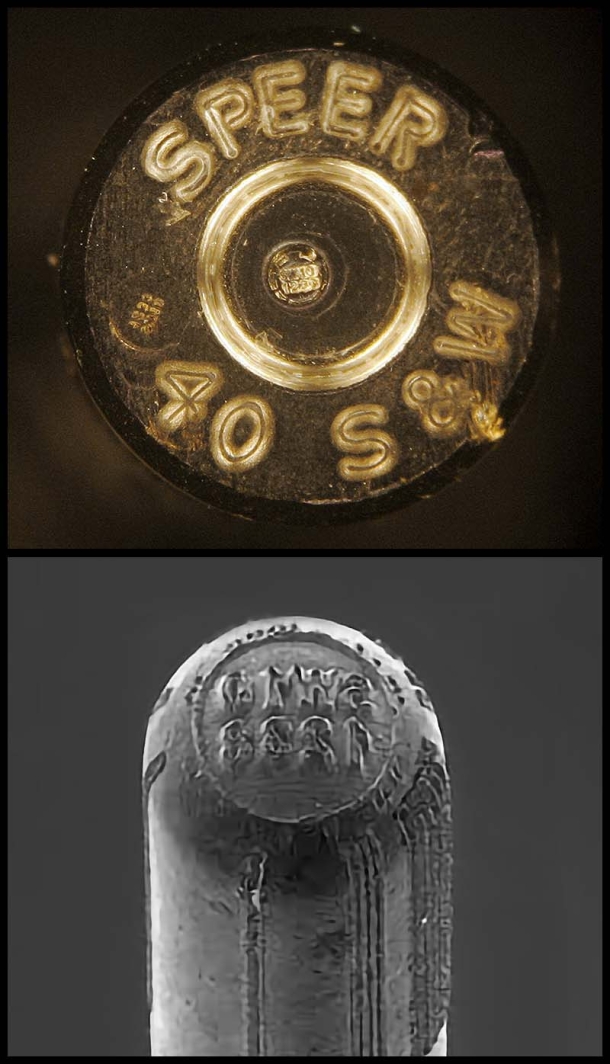California microstamping: here we go again
California is aiming to make microstamping mandatory on guns sold to law enforcement starting on 2023. Let’s have a look at microstamping, what it is and what are its pros and cons.
What is this “microstamping” proposed by Californian lawmakers?
I could say “A great solution to a manufactured problem from someone disconnected from the real world”, or “A trojan horse” or “the wet dream of gun control politicians” and leave it at that. All the above definitions are true, either singularly or together. Unfortunately it appears I’m paid to explain things, not to use my editor’s website to peddle sarcasm, so here we go.
At its most basic level, microstamping is the idea that anything can be stamped with a minuscule serial number and thus tracked and controlled. Sci-fi geeks thoughts will probably run to the serialized snake scales in Bladerunner.
Initially, propositions were made to dirtectly microstamp each and every bullet. I imagine the proponents were given a long stare in the eyes, were made aware that severely deranged subjects aren’t fit for office, and were asked again what they were saying, after which the topic was dropped with a vague mumbling.

More recent proposals, like California’s legislation, are more relistic, and involve microstamping the gun itself, like a minuscule serial number, or a sort of gearlike shape that is actually a barcode, laser etched on the firing pin face, to be transferred to the primer upon firing. This will mark the spent case making it easily identifiable as fired from that gun. At least in theory.
Other systems include microstamping the slide face, the chamber, or specific laser etching in the bore that transfers to the bullet upon firing. The principle is the same: a negative code on a part of the gun that can use springs or recoil to impress the number as a positive on case and or bullet. This would make identifying a spent case or a bullet much easier than having to rely on the unique traces left by the rifling or the bolt face, as usually done by forensic ballistic experts. Brilliant, right?
Truth is, anybody who has been around guns for some time, possibly doing regular maintenance to them, knows how easily parts can get gunked up and worn down. Microstamping is an awfully delicate and small etching and can, and will, wear down to illegibility very quickly. Not only that, but nothing in a gun happens as accurately and cleanly as purported by forensic TV shows.
Firing pins bounce back and hit again, or are dragged off the imprint by extraction. Same with the bolt face. The end result is that most microstamping ends up illegible anyway, as demonstrated by several trials by universities and the NSSF (National Shooting Sports Foundation). And this isn’t the only issue here.
Microstamping requires the keeping, updating and searching of a humongous database. We are talking tens of millions of entries every year, for every country, which would have to be transferred from gun industry to state firearm databases, which are already heavily overburdened and prone to error and failures. Who would keep it? How would it get updated?
The simple need to replace a broken firing pin would start a bureaucratic procedure which, as all bureaucracy, will be slow, prone to error and expensive. All for a system that adds very little to nothing in terms of the ability to identify which firearm fired which shots to what is already available. And to the cost of the bureaucracy, you must add the cost of the microstamping itself.
While fully within the reach of current industrial tech, microstamping requires specific equipment to be impressed, equipment which is very expensive, and can be made to be even more expensive when the powers that be mandate the use of specific, “certified” systems, whose manufacturers then become monopoly holders so that, as they say, “sky is the limit” when it comes to price of gear and licensing.
Needless to say, all these costs will end up being dumped on the end user.
This is a huge problem for honest citizens, obviously. And, obviously, politicians are fully aware of this, after all it’s not the first time for financial gun control: make guns too expensive for citizens to buy, and you’ll disarm the population as effectively as by banning them, without the political backlash. “Banning guns? Oh, surely no! We respect the Second Amendment! by all means, get any guns you want. You just have to be able to afford them... AH-AH-AH!...”
Moreover, even if microstamping worked just fine, this would rise issues about leaving around bullets or spent cases which carry your signature and could be collected by malevolent third parties and used in fraudulent way. Think of having to clean up after a day at the range as a professional hitman would do after committing murder… because otherwise you could end up be charged with one.
This brings us to the classic “Honest citizens have nothing to fear, as this system is meant to protect them.”
Anybody having even a cursory experience with any judicial system will know how false and deceiving this statement is. Honest citizens are actually the ones who have more to fear about the system itself, exactly because they believe they have nothing to fear, and saunter merrily into what actually is a lethal minefield, while the career criminal knows how to game the system. Speaking of which, all that a criminal would require to defeat microstamping is a piece of sandpaper and a few minutes of work (or a few seconds with a Dremel).
Just collecting spent brass at a range and tossing a handful around on a crime scene would wreak havoc to any forensic crime scene examination… and these are just two ways to defeat the system that come to mind in a pinch to a honest citizen: I’m sure a career criminal who actually takes the time to think about it will have many more, much more inventive ways to have a laugh at those who thought microstamping would prevent crime.
And, mark my word, politicians mandating microstamping know all this very well: there is no incompetence, no stupidity, no mistake, no ignorance in those who propose this kind of laws: just pure and simple malice.
Since California implemented the first layer of its microstamping mandating law, on May 17 2013, requiring approval for any gun to be marketed in the state, there has been a steady decline in guns submitted for approval by industry for sale in California: gun makers simply stopped marketing firearms there.
Which was the real purpose of the law from the beginnig.
Microstamping has nothing to do with crime prevention, can do nothing to make a crime scene examination and proof collecting easier (the real issues are different): it’s just a trojan horse to introduce further traps for legal gun owners preventing them to practice shooting sports and exert their fundamental human right to protect their own lives and those of their loved ones, while leaving criminals at what they do best: breaking the law.



